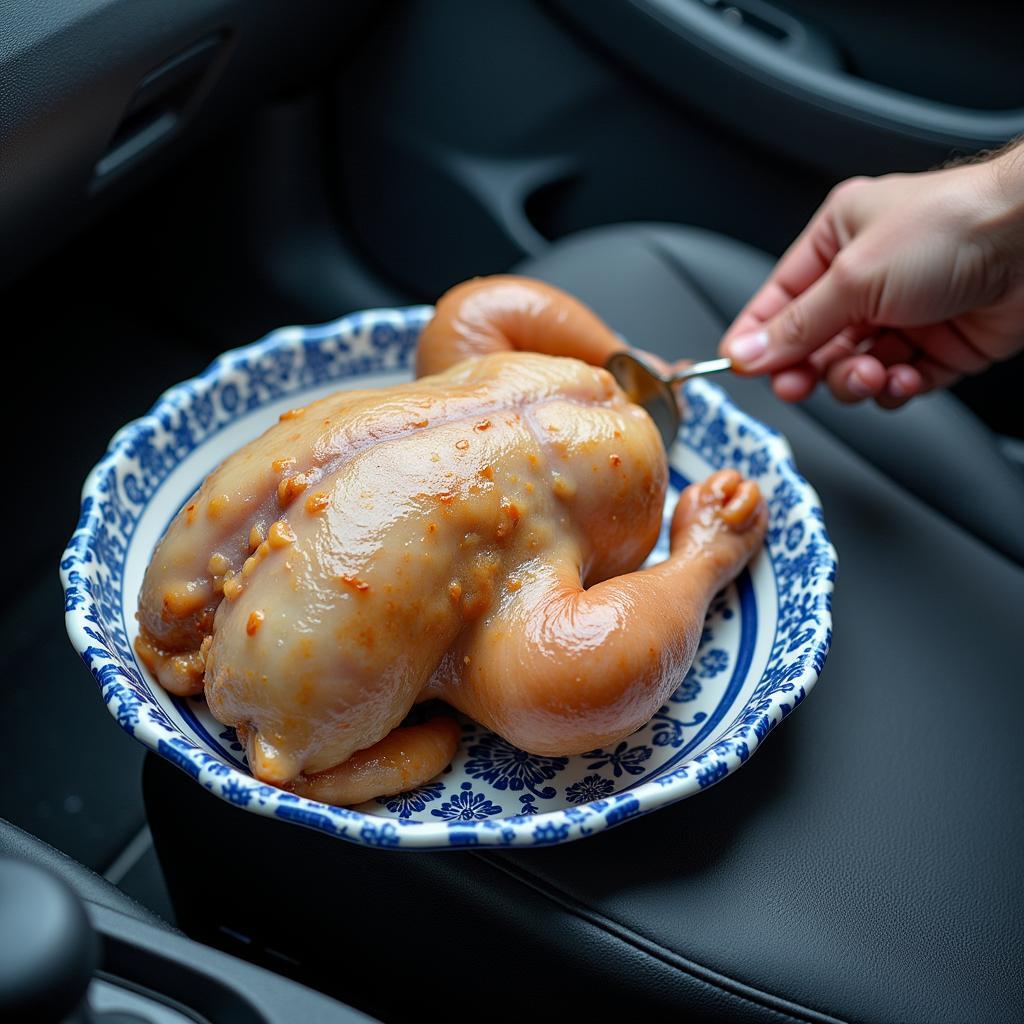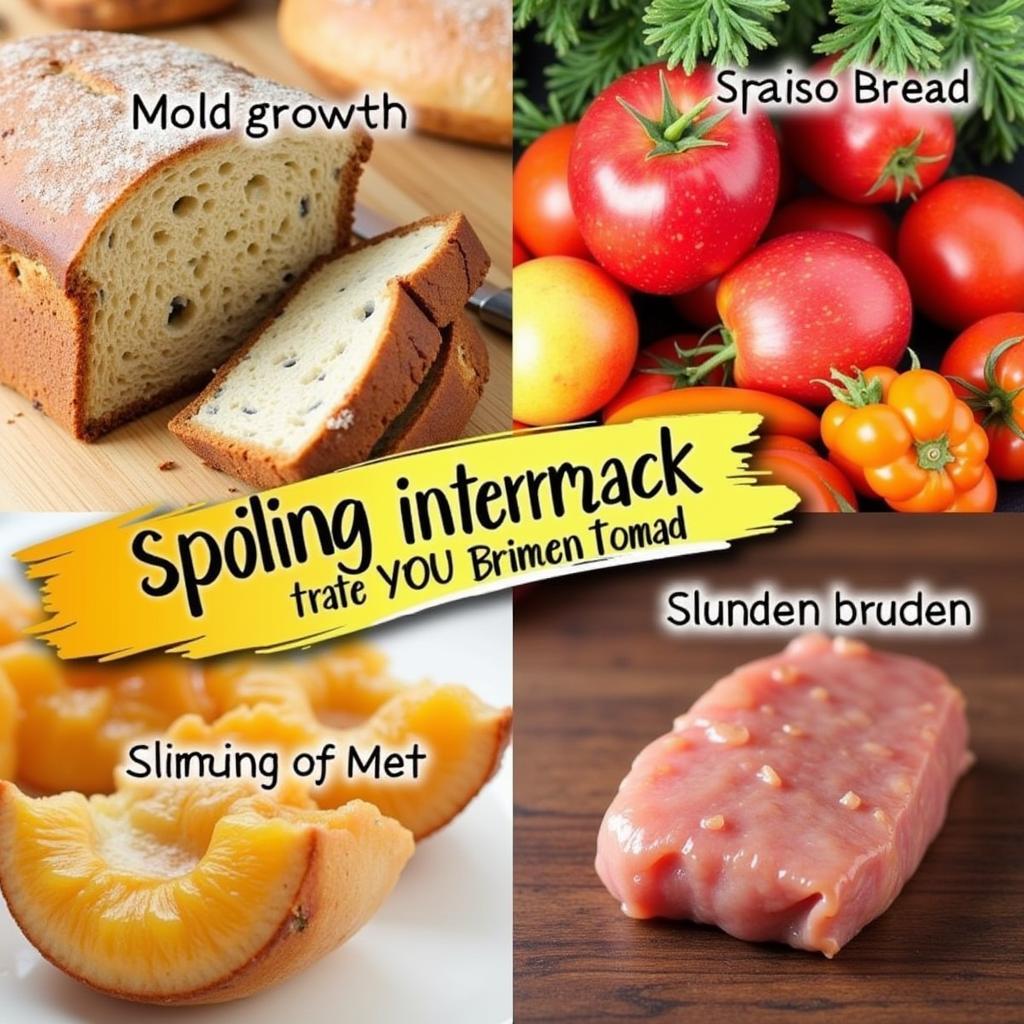Leaving food in your car overnight at 30 degrees Celsius can be a risky proposition. After a long day, it’s easy to forget those groceries in the trunk or a leftover container on the back seat. But when temperatures soar, that forgotten food can become a breeding ground for bacteria, potentially leading to foodborne illness. So, how can you tell if your food is still safe to eat? Let’s delve into the science behind food safety and explore the potential risks of leaving food in a hot car.
The Danger Zone: Understanding Bacterial Growth at 30 Degrees
Bacteria thrive in warm environments, and temperatures between 5 and 60 degrees Celsius are considered the “danger zone” for food safety. At 30 degrees, bacteria like Salmonella and E. coli can double in number every 20 minutes. This rapid multiplication can turn seemingly harmless leftovers into a health hazard. Leaving perishable foods like meat, poultry, dairy, and eggs out at this temperature for more than two hours significantly increases the risk of contamination.
How Long is Too Long? The Two-Hour Rule and its Exceptions
The general rule of thumb is to discard any perishable food left out at room temperature, or higher, for more than two hours. However, when temperatures reach 30 degrees Celsius and above, this timeframe shrinks to just one hour. There are a few exceptions, such as shelf-stable foods like unopened canned goods or dry snacks. These items are less susceptible to bacterial growth at higher temperatures.
 Bacteria growth on food left in a hot car overnight
Bacteria growth on food left in a hot car overnight
Identifying Spoiled Food: Sight, Smell, and Texture
Even if food has been left out for less than two hours at 30 degrees, it’s essential to check for signs of spoilage before consuming it. Look for changes in color, texture, and smell. Spoiled food may have a slimy or moldy appearance, an unusual odor, or a change in consistency. If anything seems off, it’s best to err on the side of caution and discard the food.
Trust Your Senses: When in Doubt, Throw It Out
Your senses are your best tools when determining if food is still safe. If you’re unsure about the safety of a particular item, trust your gut (literally!). It’s better to waste a bit of food than to risk a bout of food poisoning.
 Visual cues of spoiled food left in car
Visual cues of spoiled food left in car
Preventing Foodborne Illness: Best Practices for Car Food Safety
The easiest way to avoid foodborne illness is to prevent food from being left in a hot car in the first place. Develop a habit of checking the backseat and trunk before leaving your car, especially after grocery shopping. Consider using insulated bags or coolers to keep perishable foods at a safe temperature during transport.
Tips for Keeping Food Safe in Your Car:
- Use a cooler with ice packs for perishable items.
- Store groceries in the air-conditioned part of your car.
- Transport hot foods in insulated containers.
- Refrigerate leftovers as soon as possible.
“Leaving food in a hot car can be a recipe for disaster,” says Dr. Emily Carter, a food safety expert at the National Food Institute. “High temperatures create the perfect environment for bacterial growth, putting you at risk of foodborne illness.”
 Using a cooler for food safety in car
Using a cooler for food safety in car
Conclusion: Prioritizing Food Safety When Temperatures Rise
Left Food In Car Overnight 30 Degrees? It’s a risky gamble. While some non-perishable items might survive, the potential for bacterial growth in perishable foods is significant. By understanding the dangers of leaving food in a hot car and following proper food safety guidelines, you can protect yourself and your family from foodborne illness. Remember the two-hour rule (or one hour at 30 degrees or higher), trust your senses, and always prioritize food safety.
FAQ
- Can I still eat food left in the car overnight if it looks and smells okay? Not necessarily. Bacteria can grow without producing noticeable changes. It’s best to err on the side of caution.
- What are the symptoms of food poisoning? Common symptoms include nausea, vomiting, diarrhea, stomach cramps, and fever.
- How long can I keep food in a cooler? A well-insulated cooler with plenty of ice packs can keep food safe for several hours, even in hot weather.
- What should I do if I think I have food poisoning? Stay hydrated and consult a doctor if symptoms are severe or persistent.
- Are all bacteria harmful? No, not all bacteria are harmful. Some are beneficial for digestion and other bodily functions. However, the types of bacteria that grow on spoiled food can cause illness.
- Is it safe to reheat food that has been left in a hot car? Reheating will not kill all bacteria, so it’s generally not safe to reheat food left in a hot car for an extended period, especially if it’s perishable.
- What is the best way to transport groceries in hot weather? Using a cooler with ice packs is the best way to keep perishable groceries safe in hot weather.
Need assistance with food safety or have other food-related questions? Contact us! Phone: 02437655121, Email: minacones@gmail.com Or visit us at: 3PGH+8R9, ĐT70A, thôn Trung, Bắc Từ Liêm, Hà Nội, Việt Nam. We have a 24/7 customer service team.